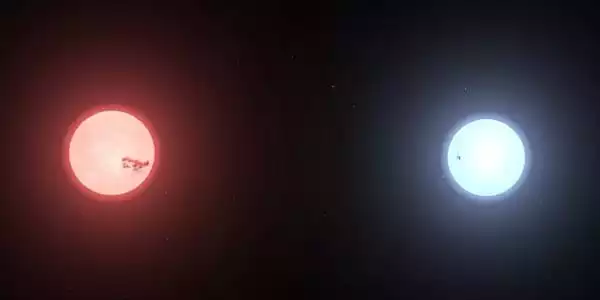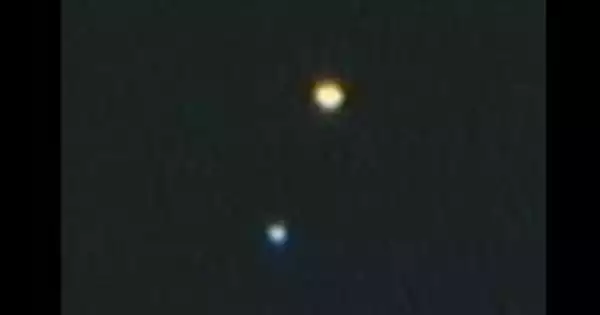NSVS 14256825 is an eclipsing binary system in the Aquila constellation. It is classified as a Subdwarf Star. A subdwarf OB star and a red dwarf star make up the system. It is not part of the Aquila constellation shape, but it is within its boundaries. Every 2.648976 hours, the two stars orbit each other. The system is roughly 2,700 light-years (840 parsecs) distant, based on the star parallax detected by Gaia. It is 2734.21 light-years away from Earth.
The gas giant exoplanet NSVS 14256825 b orbits an O-type star. It has a mass of 14.15 Jupiters, takes 8.8 years to complete one orbit around its star, and is 3.12 AU away from it. It was discovered in 2019 and was announced.
Nomenclature
The system is most commonly known by its designation from the Northern Sky Variability Study (NSVS), which is a survey of stars with apparent magnitudes ranging from 8 to 15.5. It is also known by the variable star designation V1828 Aquilae.
The star’s Radial Velocity, or the rate at which it moves away from/towards the Sun, is 12.10000 km/s. When the value is negative, the star and the Sun are getting closer; when the value is positive, the two stars are moving apart.

Eclipse timing variations
NSVS 14256825 has been extensively examined using photometry, although the resulting models frequently contradict each other, even when the statistical significance is identical, or when data is collected later. Many investigations have discovered that this system exhibits significant, cyclic eclipse timing variations (ETVs) that are not explained by other stellar systems such as the Applegate mechanism. It was discovered in 2012 that the orbit of NSVS 14256825 was rising at a pace of 12×10-12 days per orbit.
The star’s parallax is stated as 1.19290, resulting in a computed distance from the Earth to NSVS 14256825 of 2734.21 light-years or 838.29 parsecs. Initially, it was stated in 2012 that two huge planets with masses of 2.9 and 8.1 times the mass of Jupiter were in orbit around the binary, with periods of 3.5 and 6.9 years, respectively. Another report asserted the presence of a single planet with a mass 12 times that of Jupiter, orbiting the Sun every 20 years. However, following investigations with masses as high as 15 MJ and times as short as 8.83 years have produced different results. Studies also do not agree on whether one substellar body can explain the ETVs, or whether additional companions are necessary, but further research is needed to obtain better coverage of data.
















